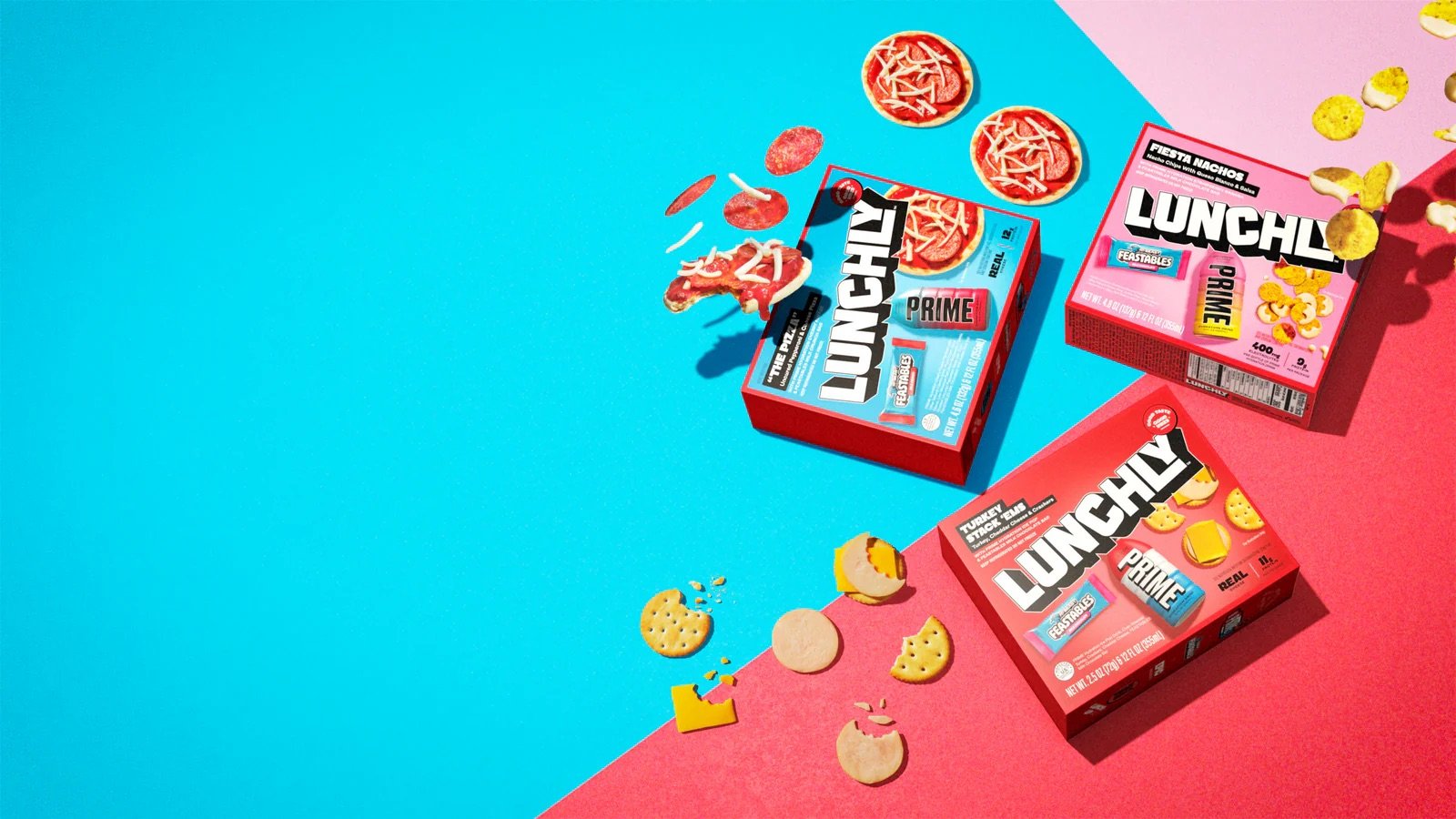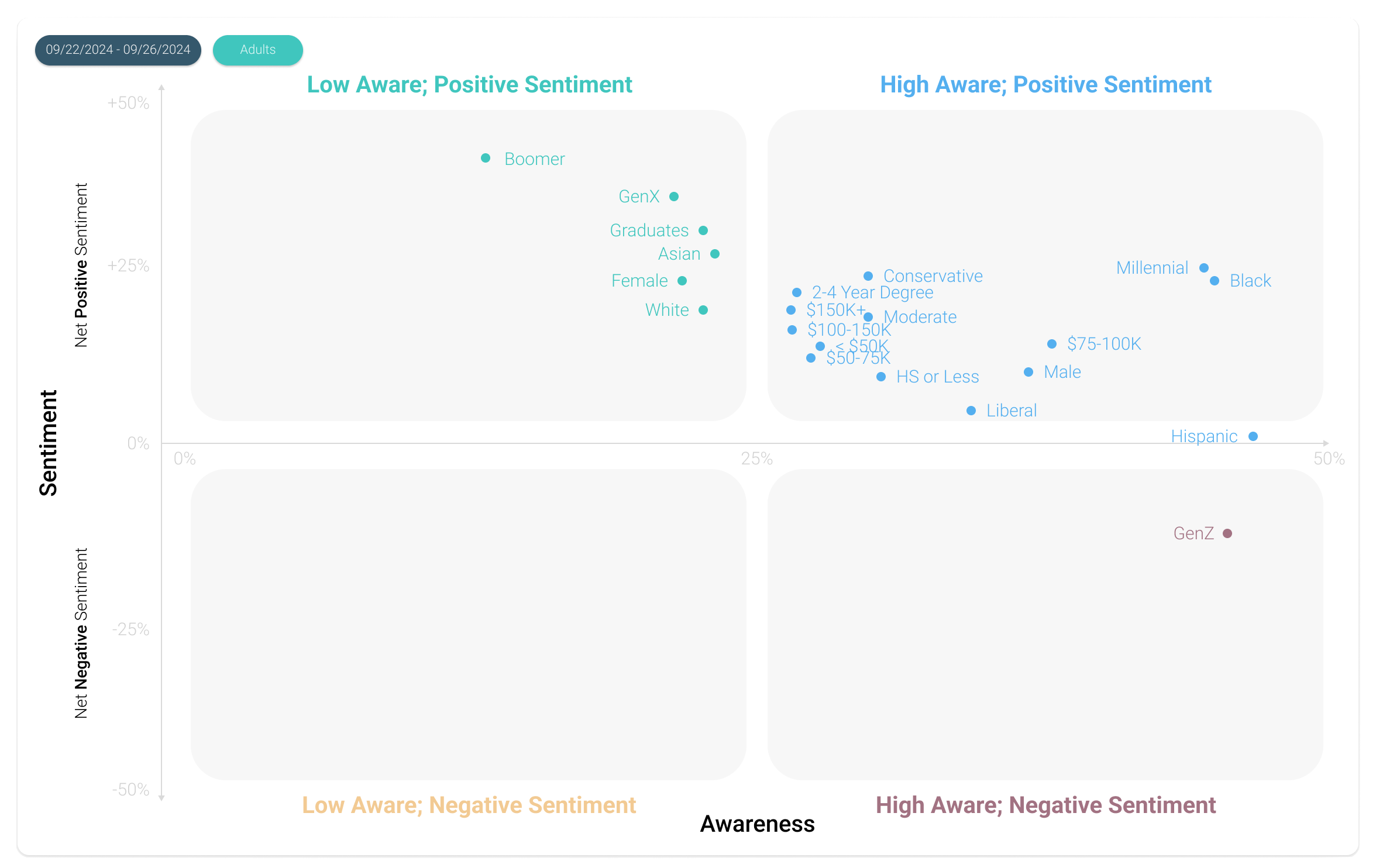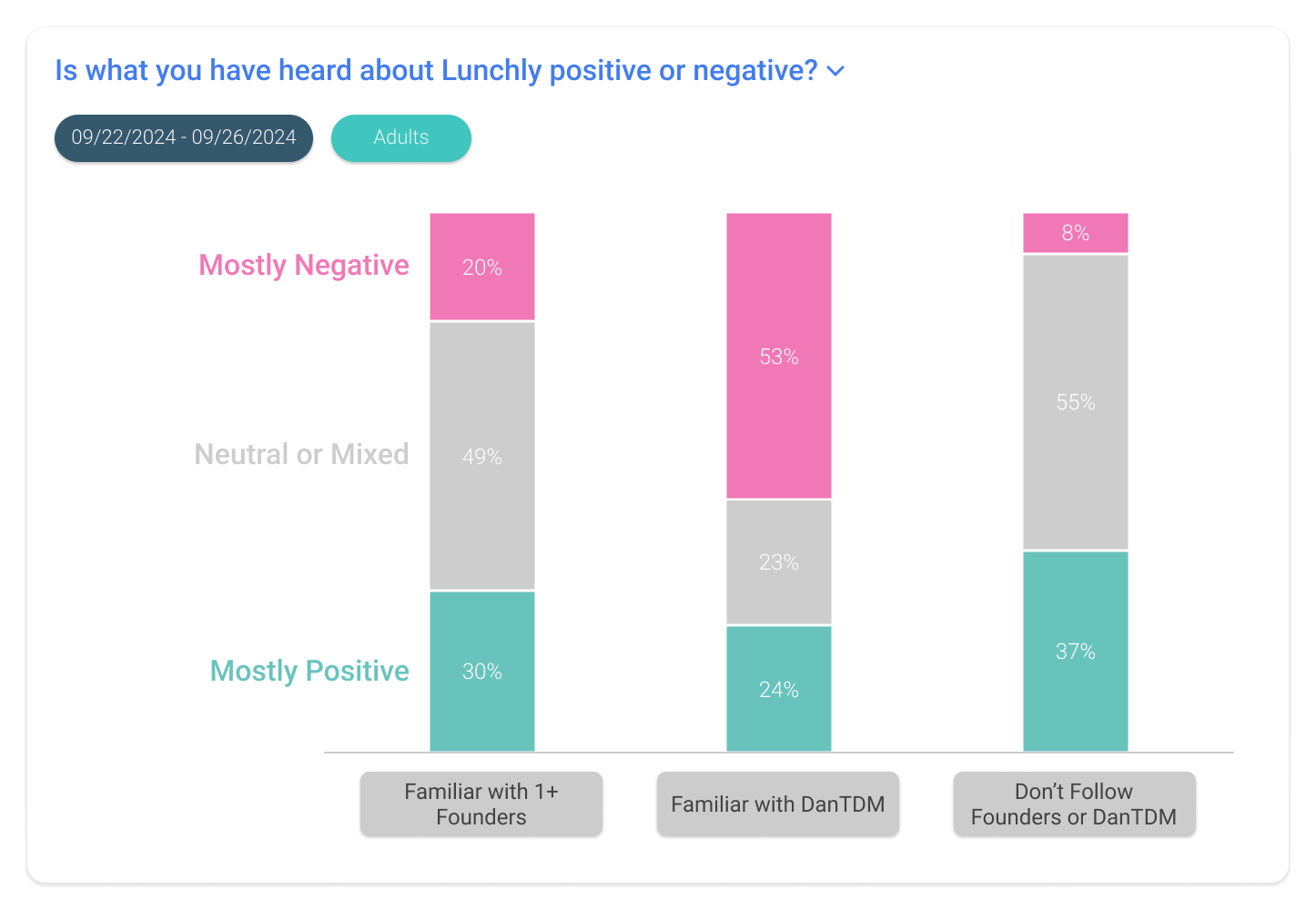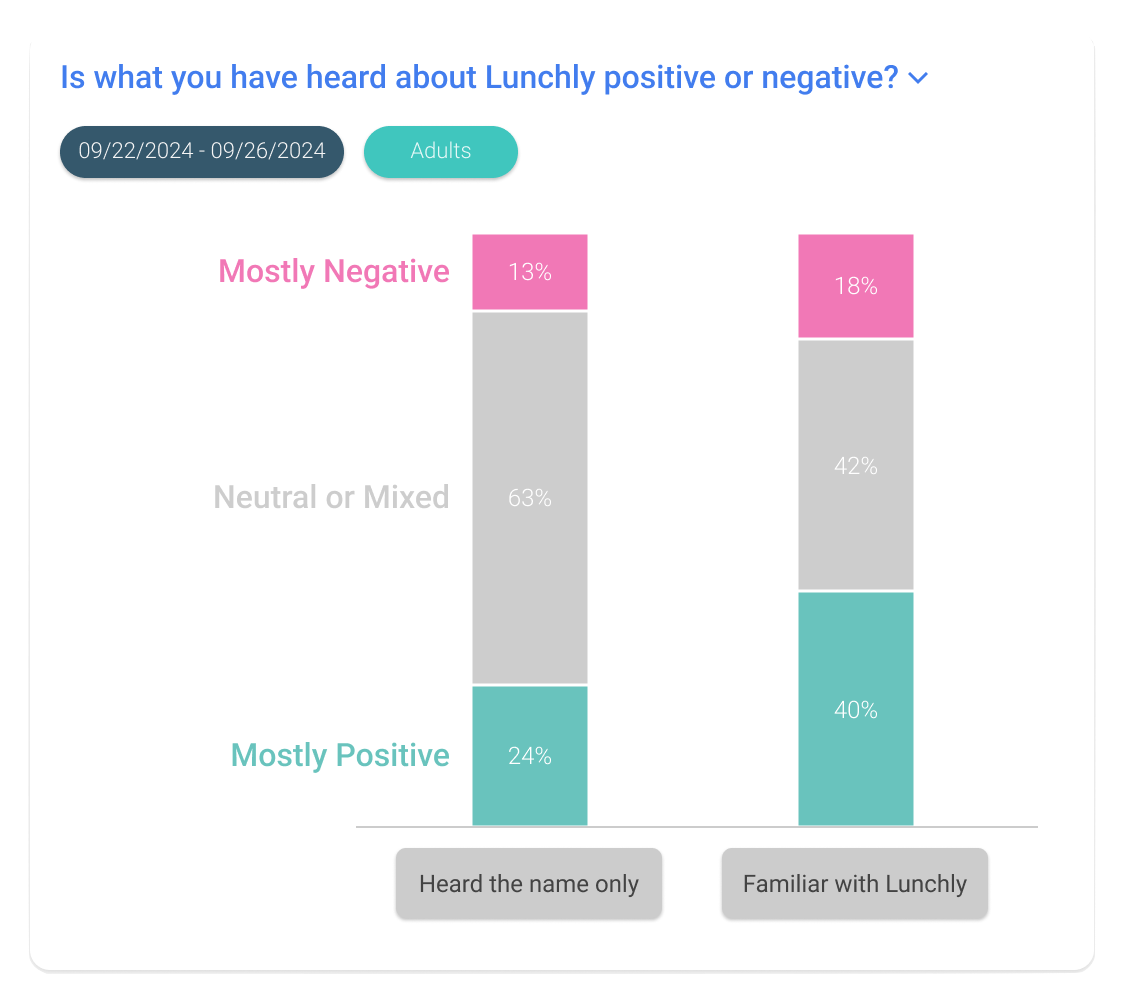Lunchly: Roasted on Social, Eaten Up by Consumers

Source: Lunchly / Congo Brands
When YouTube giants MrBeast, Logan Paul, and KSI announced the launch of Lunchly, their answer to the $1.6 billion Lunchables empire, the internet's reaction was swift and scathing. Critics across social media platforms lambasted the trio for "selling garbage to kids who trust them," with health experts raising eyebrows at the nutritional content and parents expressing concern over influencer marketing tactics.
But beyond the viral TikToks and Twitter threads lies a crucial question: What do everyday consumers actually think?
To find out, we surveyed 2,198 adults across the United States between September 22-26, 2024, just days after the product's announcement. The results challenge the narrative dominating social feeds.
Awareness: A Name Spreading Like Wildfire
Despite being less than a month old at the time of our survey, 28% of adults reported awareness of Lunchly—a remarkable figure for a brand in its infancy. Even more striking: 40% of those aware had discovered it within the past week, highlighting the velocity of the brand's spread.
The awareness patterns tell a clear story about Lunchly's reach:
- Gen Z (50%) and Millennials (38%) lead in brand recognition
- Parents show higher awareness (35%) than non-parents (24%)
- The brand has achieved notable penetration even among Gen X (23%) and Boomers (17%)
This broad demographic spread suggests that Lunchly's awareness extends well beyond the YouTubers' core fanbase, reaching into mainstream consciousness at a pace that would make established brands envious.

Sentiment: Surprisingly Positive
Here's where the data diverges most dramatically from the social media narrative: Among those aware of Lunchly, 33% report favorable impressions compared to just 16% expressing negative views. The remaining respondents maintain neutral positions or lack sufficient information to form an opinion.

The sentiment story becomes even more intriguing when we examine it through different lenses:
The Familiarity Factor
Positive sentiment climbs to 40% among those who report being "somewhat" or "very" familiar with the product, while negative sentiment holds steady. This suggests that increased exposure to the brand correlates with improved perception—the opposite of what you'd expect if the product truly deserved its online ridicule.

The Parent Perspective
Perhaps most surprisingly, parents—the demographic seemingly most aligned with the critics' concerns—show sentiment patterns nearly identical to non-parents. 32% of aware parents view Lunchly favorably, virtually matching the overall average. If anything, parents skew slightly more neutral, suggesting a wait-and-see approach rather than the knee-jerk rejection portrayed online.
The Generation Gap... Isn't
While you might expect stark generational divides, the data reveals remarkable consistency. Gen Z (36%) and Millennials (35%) show the highest favorability, but even Gen X (30%) and Boomers (28%) maintain notably positive sentiment ratios. The critics' portrayal of older generations unanimously rejecting influencer-backed products doesn't hold up to scrutiny.
Beyond the Influencer Echo Chamber
The disconnect between social media discourse and broader public opinion raises important questions about how we measure brand perception in the digital age. While platforms like TikTok and Twitter amplify the loudest voices, they may not represent the median consumer.
Consider this: Among our respondents who were aware of Lunchly, 62% reported learning about it through traditional news coverage or word-of-mouth rather than social media. These consumers, experiencing the brand without the filter of viral criticism, show higher favorable ratings (38%) than those whose primary exposure came through social platforms (29%).
This suggests that Lunchly may be benefiting from a phenomenon we might call the "controversy dividend"—where social media backlash drives mainstream media coverage, which in turn reaches audiences who form their own, often more favorable, impressions.
What This Means for Brands
The Lunchly case study offers several lessons for brands navigating today's fragmented media landscape:
- Social media sentiment isn't market sentiment. The loudest voices online may represent a passionate minority rather than your broader customer base.
- Controversy can accelerate awareness. Lunchly achieved in weeks what many brands take months or years to accomplish in terms of recognition.
- Demographics still matter, but not always as expected. The parent demographic's neutral-to-positive response challenges assumptions about protective instincts trumping all other considerations.
- The influencer effect is real but nuanced. While the creators' fame undoubtedly drove initial awareness, sustained positive sentiment suggests the product may have merits beyond celebrity endorsement.
The Bigger Picture
As Lunchly moves from launch buzz to market reality, the true test will be whether it can convert awareness and sentiment into sales and loyalty. Our data suggests the brand has cleared its first hurdle more successfully than its critics predicted.
The virality of the backlash may have inadvertently done Lunchly a favor, catapulting it into public consciousness while allowing the product to exceed the low expectations set by its detractors. In an attention economy where obscurity is often a bigger threat than controversy, Lunchly's creators may be having the last laugh.
Whether that translates to long-term success remains to be seen. But for now, the data tells a clear story: While Lunchly may be getting roasted on social media, consumers are eating it up.
Methodology
This survey was conducted online from September 22-26, 2024, among a sample of 2,298 adults. The data has been weighted to match U.S. census estimates for age, gender, education, race, and region. The margin of error for the full sample is ±2.0% at the 95% confidence level.
Ready to evolve your research?
Outward Intelligence combines the power of AI with human expertise to deliver insights that drive real business impact.Learn how we can help →
Share this article
Related Articles
How GLP-1 Medications Are Revolutionizing Food Consumption Patterns
New data reveals dramatic shifts in eating habits among GLP-1 users, with major implications for food brands and retailers.
Read more →